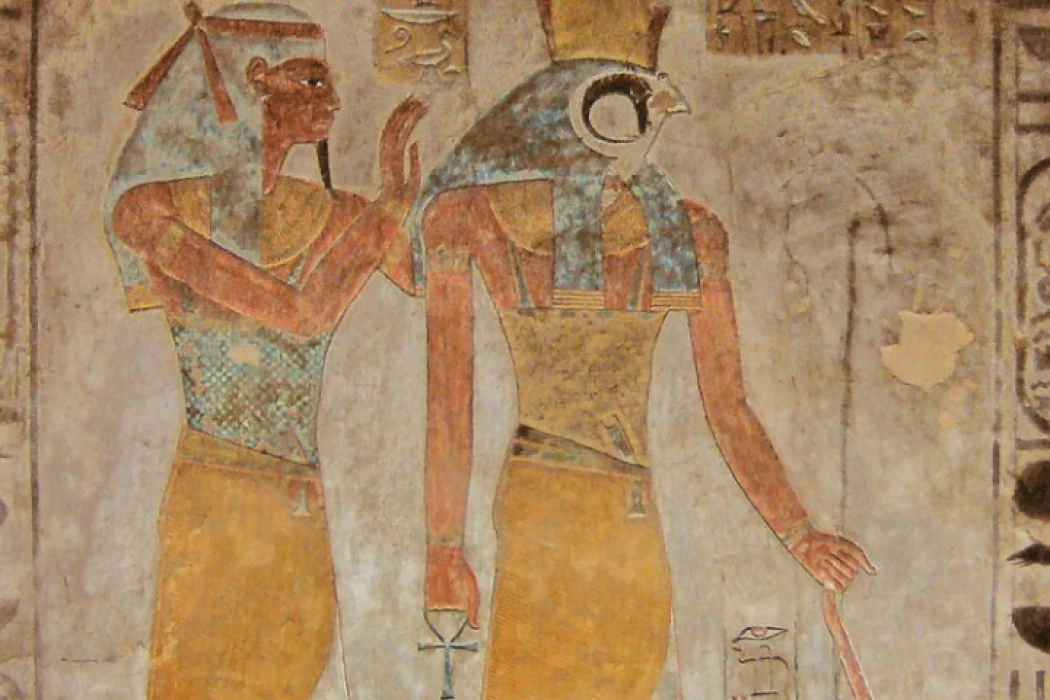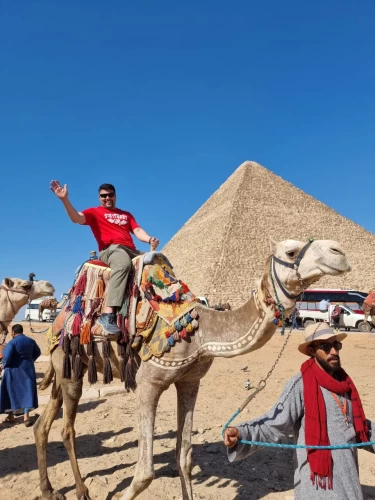
God Geb | Dio della Terra
God Geb
Geb era considerato il principe degli dei egizi, questa divinità simboleggiava la fertilità come l'inizio della vita. D'altra parte, era responsabile della fornitura dei minerali e delle pietre preziose trovate nel sottosuolo.
Dio della Terra
La divinità era rappresentata da un uomo con la pelle verde, il suo colore simboleggiava la terra del Nilo, la vegetazione e la vita, era anche visualizzata con un'oca in testa poiché questo uccello è la sua personificazione.
I suoi genitori erano Tefnut e Shu che gli diede il trono lasciandolo come erede, dopo la cospirazione di Apophis, che era un serpente che rappresentava il male, che lo rese il terzo faraone.
Geb aveva una sorella di nome Nut, che era sua moglie, questa unione rappresentava una delle coppie che componevano l'Eliopolita Ennead, da quella relazione nacquero quattro figli: Osiride, Iside, Seth e Nefti.
Il dio della terra, potrebbe anche essere trovato disteso a terra con il suo pene eretto, cercando di raggiungere sua moglie senza trionfo, poiché suo padre era incaricato di separarli, Shu poteva essere visto nel mezzo dei due, che rappresentava le valli e montagne che li tengono lontani.
Dominando gli inferi, Geb aveva il compito di tenere prigioniere le anime che non erano state giuste, rappresentando la scatola del sarcofago, mentre Nut ne era la copertura, incarnando così il guardiano delle porte del cielo.
Ti piacerebbe vivere un viaggio attraverso l'antica cultura e mitologia egizia? puoi farlo accadere e trascorrere una giornata a visitare Abydos, Giza, Luxor, Assuan per vedere le tombe dei Faraoni adornate con scene molto chiare, dettagliate e splendidamente dipinte delle varie divinità dell'antico Egitto e di molti altri siti,
Il nostro team vi aiuterà a viaggiare in Egitto e sperimentare il tempo soleggiato del nostro bel paese durante la Pasqua 2024, grazie alla loro vasta conoscenza del turismo egiziano. Puoi personalizzare il tuo pacchetto selezionando uno dei nostri pacchetti di viaggio in Egitto o sfruttare al massimo il tuo tempo in una breve visita, imparando di più sulla storia egiziana e le sue affascinanti storie e vivendola attraverso tour privati al Cairo. Partecipa a uno dei nostri tour economici in Egitto attraverso il deserto del Sahara, come i tour di Siwa dal Cairo, per esempio, o preferibilmente i tour nel Deserto Bianco d'Egitto. Scoprite i nostri tour di un giorno ad Assuan, fate una gita di un giorno da Assuan ad Abu Simbel, o viaggiate via terra e godetevi i nostri tour di un giorno a Luxor per vedere gli incredibili templi di Karnak, il Tempio di Luxor, il Tempio di Hatshepsut, e vedete le meravigliose tombe splendidamente dipinte nella Valle dei Re, questo è il luogo dove i re e i governanti del nuovo regno riposano in pace e imparate i loro riti di mummificazione e sepoltura.
Geb was considered the prince of the Egyptian gods, this deity symbolized fertility as being the beginning of life. On the other hand, it was responsible for supplying the minerals and precious stones found underground.
The deity was represented by a man with green skin, its color symbolized the land of the Nile, the vegetation, and life, it was also visualized with a goose on its head since this bird is its personification.
His parents were Tefnut and Shu who gave him the throne leaving him as heir, after the conspiracy by Apophis, who was a serpent who represented evil, which made him the third pharaoh.
Geb had a sister named Nut, who was his wife. This union represented one of the couples that made up the Heliopolitan Ennead, from that relationship, four children were born: Osiris, Isis, Seth, and Nephthys.
The earth god, could also be found lying on the ground with his erect penis, trying to reach his wife without triumph, since his father was in charge of separating them, Shu could be seen in the middle of the two, representing the valleys and mountains that keep them away.
By dominating the underworld, Geb was in charge of keeping captive the souls that had not been just, representing the sarcophagus box, while Nut was the cover of it, thus incarnating the guardian of the gates of heaven.
Geb is shown as a man on the earth, with his sister Nut, the sky goddess, standing atop him and covered in stars. The rest of the scene shows their parents Shu, the air god, raising his arms, and Tefnut, the moisture goddess, mentioned only by name, and the god Ra riding the sun boat.
«Geb» is sometimes depicted in the form of a human carrying a goose on his head, and his name is written in two syllables «goose and man», where the man is pronounced as the letter «b». As for the goose that the ancient Egyptians chose to write the name «Jeb», it is a Nile goose that was domesticated by the ancient Egyptians in the early days.
The god «Geb» had beneficial qualities and characteristics, as green grains came out of his rib, and plants grew on his back. «Geb» was the source of fresh water, and the source of everything the earth produced, so it was directly linked to the fertility of the earth and the gate.
The power of «Geb» sometimes had harmful aspects, as earthquakes occur when he laughs, and he can prevent his blessings in times of drought, or in arid regions, and because of its importance as a distress to the earth, it may represent a grave.
«Geb» was depicted in many scenes and inscriptions in temples, and it was also associated with some characteristics of popular religion, as it was associated with healing, and its ability to heal was great, so it was supplicated to in some paragraphs in order to heal from a scorpion sting.
Although he did not have a major cult or belief of his own, he was depicted in many scenes and inscriptions in temples, and was also associated with some characteristics of popular religion, as he was associated with healing, and his ability to heal was great, so he was supplicated to in some paragraphs in order to heal from Scorpion sting.















